After a cold early spring, typically gentle bumblebees are unusually irritable and aggressive when I poke my nose into their business. I’m not a complete idiot, and not unsympathetic to their business of collecting nectar. So, I back off until they are a bit calmer, then dive in again. Photographs must be taken, even at great personal risk.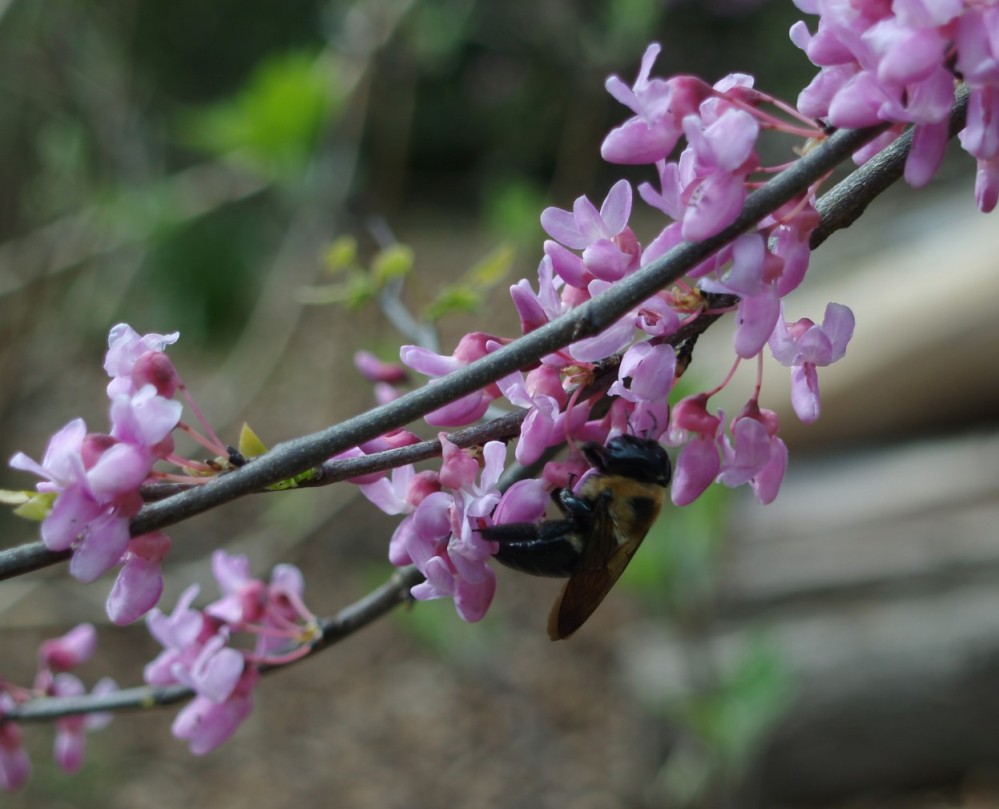
There are mostly bumblebees in the garden and fewer honeybees, but as the days grow warmer there are many other small bees and hoverflies visiting the blooms of redbuds (Cercis canadensis, above) and pieris (Pieris japonica ‘Dorothy Wyckoff’, below). The native dogwoods do not attract bees until the true flowers (at the center of the white bracts) open, and most of the flowers of the native serviceberry are too high for me to see if there are bees, or not. There are rarely any fruits on the serviceberry, so perhaps the blooms are too high for the ground hugging bees and the flowers are not pollinated.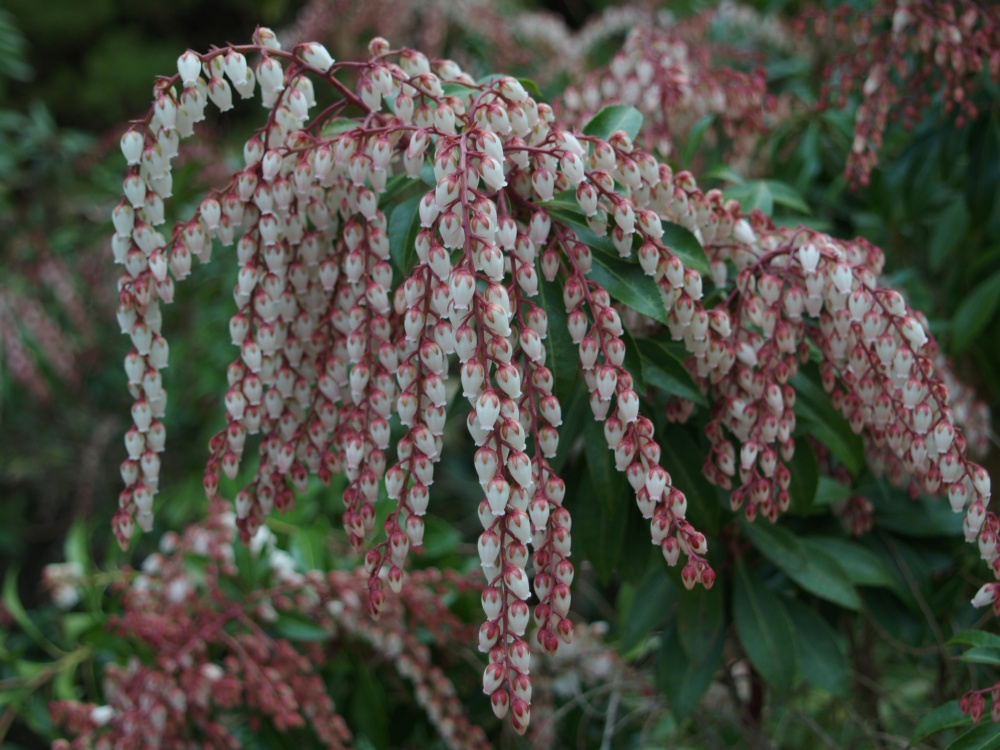
Serviceberry (Amelanchier canadensis, below) grows at the edge of the forest that borders the garden, wedged beneath towering maples and poplars. This habitat is nearly identical to the native environment where serviceberry grows along clearings where there is some protection from the afternoon sun, but not heavy shade. The shaded lower branches flower sparsely, but the sunnier canopy is covered in small white blooms in mid April.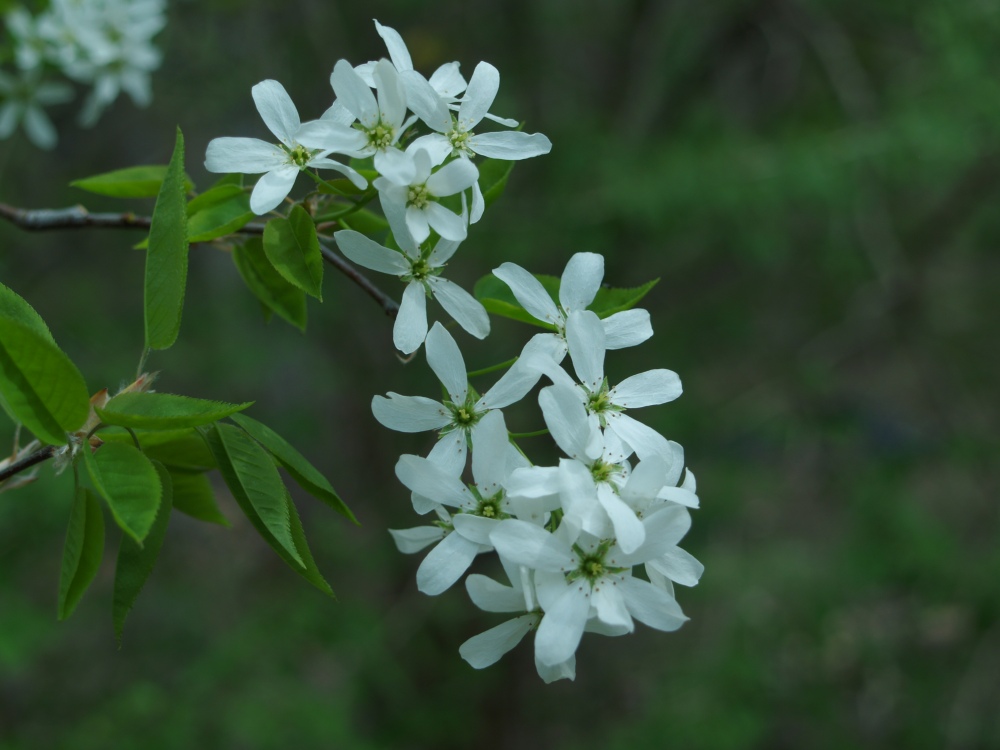
Serviceberry (sometimes called shadbow) is an under appreciated tree for the garden, mostly ignored but now spotlighted by the edible movement for its small black fruits. If there are ever fruits on my tree the birds will discover them long before I do, so I include the serviceberry only because it is an exceptional tree. I find that with multiple insubstantial trunks it’s habit is a bit too informal for the center of the garden, but it is well suited to the border, and to the edge of a woodland.
The native dogwood (Cornus florida, above) is the most magnificent of trees with exceptional flowers, autumn foliage color, and red berries. Unfortunately, it also has its troubles, so this is worthy of some discussion before you rush out to the garden center to purchase a few for your garden. There are a few seedling dogwoods in my garden that poke out from beneath the forest’s maples, and I’ve planted a few of the white flowering types, a white flowered dogwood with pendulous branching, and one with variegated foliage (Cornus florida ‘Cherokee Sunset’, below). There are also handfuls of hybrids and Chinese dogwoods that we’ll get along to in a few moments.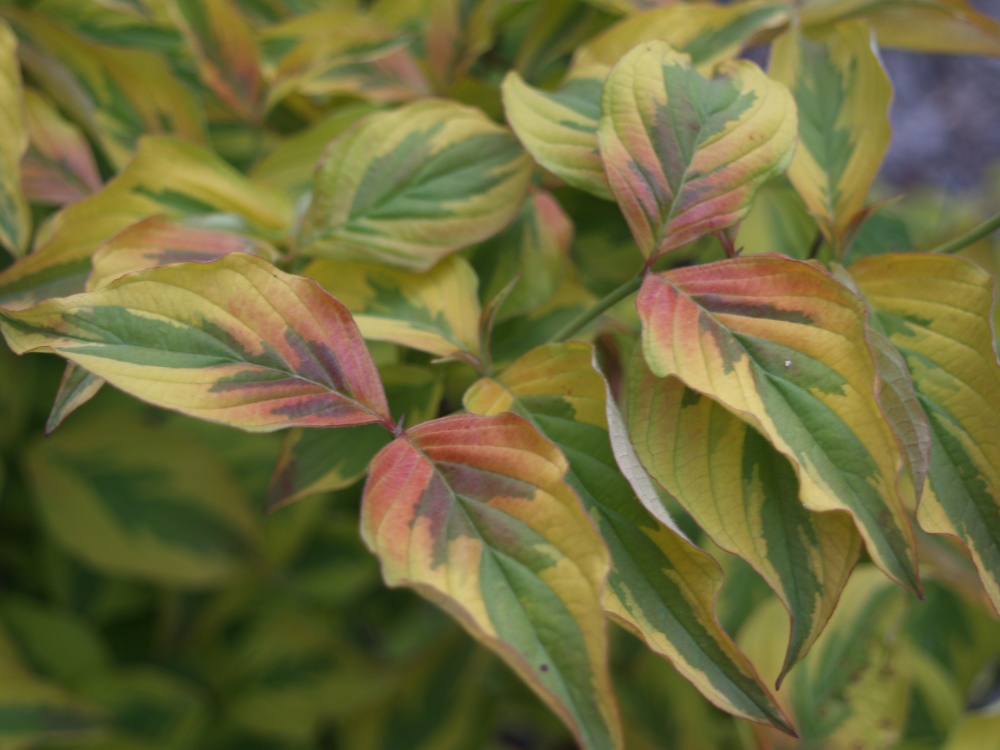
In wet springs the dogwoods (native seedlings and planted ones) regularly suffer from leaf spotting and often from mildew, and the oldest of the dogwoods I planted over twenty years ago has some large stem cankers that will eventually spell its doom. The problems are not the dreaded anthracnose (Discula destructiva) that kills dogwoods at higher elevations and in cooler regions, but they must be a consideration for the home gardener.
I have not regretted planting the native dogwoods, and twenty five years of sublime enjoyment (despite a few leaf spots) is reason enough to recommend this splendid tree. But, I have also planted hybrid dogwoods and Chinese dogwoods that extend the blooming season into early June. These are not substitutes for the native dogwood, but complements in a garden with dozens of small trees. 
For the gardener concerned by the problems of the native dogwood the hybrids are an excellent alternative. I’ve planted the Rutgers’ hybrids ‘Stellar Pink’ (Cornus x ‘Rutgan’), the large, white flowered ‘Venus’, and a variegated mutation of the white flowered ‘Celestial’ (Cornus x ‘Celestial Shadow’, above). All perform without any attention, and the leaves are not bothered by spotting, even in the wettest weather. The Rutgers’ hybrids begin to flower the week following the peak of the native dogwoods, and when the native looks bedraggled in late summer the hybrids are lush and vibrant.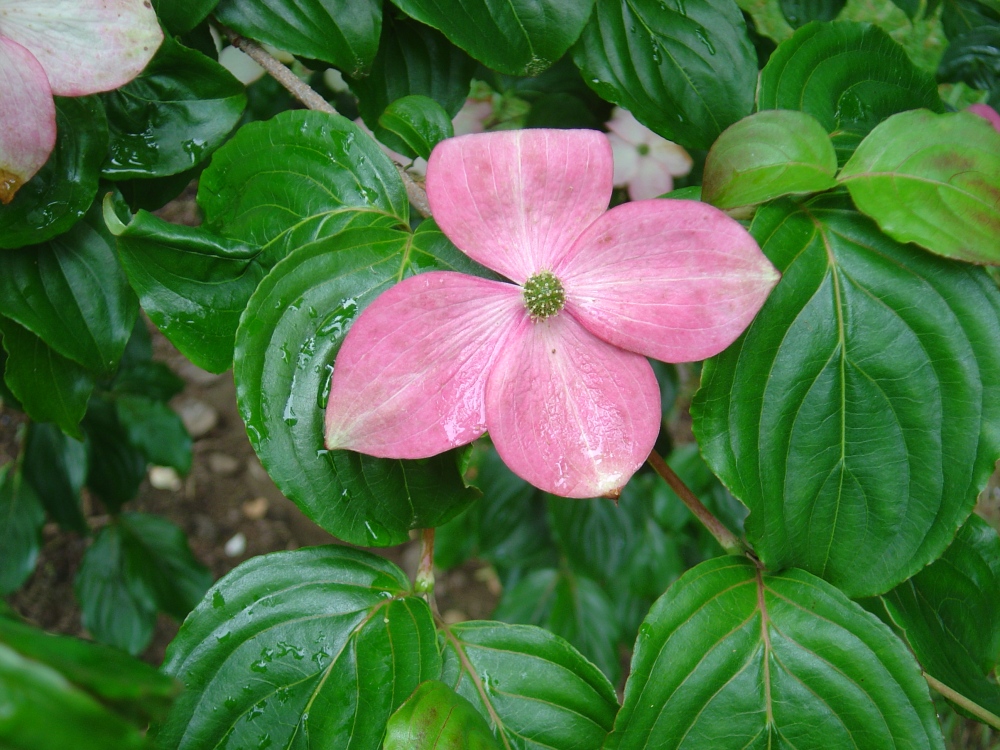
I’ve planted a number of Chinese dogwoods (Cornus kousa ‘Satomi’, above) in the garden with varying flower and leaf colors, and these perform admirably, also without demanding any care.The Chinese dogwoods tend to be more wide spreading (though there are more upright forms), and these continue the flowering of dogwoods through May and often into early June.
All of the dogwoods are exceptional trees. For gardeners inclined to planting native trees there is little reason to overlook the indigenous dogwood, as long as it is sited in well drained soil. It will grow in full sun if given adequate irrigation, and it will tolerate nearly full shade, though it prefers a situation between these extremes. Chinese and hybrid dogwoods ask for a bit more sun, but they are quite undemanding as long as they aren’t planted in waterlogged soil. I see no reason that every garden should not have a dogwood, or two.

What a wonderfully informative post. I’m always appreciative you give us botanical as well as common names.
So many people ignore the beauty of trees and shrubs when laying out their gardens: you are surely NOT one of them!!
We have the opposite here in the Bay Area. Little rain and high temps mean gardens this year will be sparse!